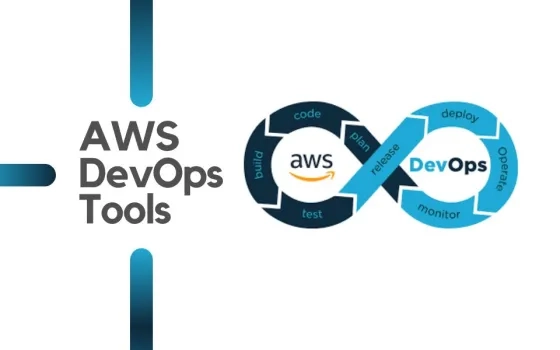The most critical part of the Information Technology industry is information. No surprise, in the early 80s, encryption and decryption of messages were given the utmost importance. Later as organizations started focusing on the pace of software delivery, security took a backseat. But, as technology evolved, general concern for protecting code and applications became imperative. Application security became as important as the pace of software development. However, most developers still feel the heat to develop applications faster. And in the process, application security could be at risk.
Application security applies application-level measures to prevent data or code from being stolen or tampered with. AppSec incorporates security practices during the entire software development lifecycle and approaches to protect applications. It encompasses hardware, software, and procedures that help detect, fix, and prevent security threats and vulnerabilities in your software. Different application security features work in coordination to reduce vulnerabilities and weaknesses and protect applications from severe breaches.
Here are some of the vital application security features that one needs to consider for AppSec:
-
Authentication: Authentication ensures only authorized users gain access to an application with a verified username and password while logging in to an application.
-
Authorization: Authorization validates the user entered information with a list of authorized users to provide access to an application.
-
Encryption: After authenticating, encryption helps to keep the sensitive data safe by encrypting the traffic containing sensitive data.
-
Logging: In case of a security breach, logging helps to keep track of events and logs to identify the user who accessed the data.
-
Application security testing: Application security testing ensures the proper working of security controls.
The need for AppSec has increased, which calls for a robust security strategy. Many organizations embrace shift left and DevSecOps cultures to incorporate security into the development process. However, in addition to DevSecOps, one must focus on AppSec. Confused? Let's see the difference between the two terms, why should AppSec be integrated into DevOps, leading AppSec techniques, how to bridge the AppSec and DevOps disconnect.
Difference between AppSec and DevSecOps
Though the purpose of application security and DevSecOps is to integrate security, both terms are often misunderstood to be the same. AppSec focuses on improving application security by understanding the application through source code reviews and observing security flaws. Design review, code review, security audit, automated tooling, and coordinated vulnerability platforms are the other approaches to help find security vulnerabilities lurking in your application.
DevSecOps, on the other hand, is a philosophy that integrates security as a shared responsibility throughout the entire lifecycle. DevSecOps automatically integrates security at every stage of the software development lifecycle to enable secure software development with agility and speed.
Why integrate AppSec into DevOps?
AppSec plays a crucial role in all phases of the software development process. However, AppSec activities are usually postponed until the very end of the project, just before releasing any application. If security threats are discovered in applications at the very end, fixing them can become tedious and costly. The lack of AppSec in DevOps processes can also expose your customer data. To prevent such situations, the AppSec activities need to be integrated into every phase of the DevOps process, ensuring baked-in security into your applications.
-
Enhanced development speed and uninterrupted delivery: Maintaining development speed is the key to delivering software faster. However, aggressive timelines may affect the quality and security of applications. The vulnerabilities cannot be passed into the final product. AppSec can turn out to be a time-consuming and complex process, but it will ensure security. It needs to be agile and adaptable. Integrating AppSec into DevOps processes bolsters better workflows and overall management with safer product development. DevOps combined with AppSec increases the pace of software development, enhances quality, minimizes costs and streamlines seamless collaboration among teams.
The high-level visibility into risks and vulnerabilities helps organizations make informed business and operational decisions. To assess the overall security posture of the application and challenges of AppSec, effective automation and orchestration of AppSec tools should help. It will result in better collaboration, faster identification of risks, enhanced business continuity, and uninterrupted delivery of secure software products.
-
Frequent new threats detection: DevOps teams keep the innovation rolling while maintaining speed and agility. While it is imperative to scan for security threats, DevOps teams may not spend extra time on security checks. On the other hand, security scanning tools are the backbone of any robust AppSec strategy. Still, they may not be easy to use or optimize. Running scanning tools within the DevOps pipeline is crucial to identifying risks in time. With AppSec in DevOps, developers get more visibility into prioritized risks to streamline the secure and faster software delivery.
-
DevOps relationship with security: AppSec requires effective coordination of developers, quality assurance, security teams, and Ops teams. When you have separate teams for development and security, it is hard to coordinate between the two teams. While development teams recognize the need for better security, they're not always equipped or incentivized to take it on. Suppose both the teams disagree on streamlining the security process. In that case, an organization can face devastating threats such as digital breaches or loss of revenue. Integrating AppSec into the DevOps process helps fulfill the common goal of delivering high-quality software securely.
Application security testing techniques
Security testing techniques are implemented to explore vulnerabilities and security holes in applications. Security testing is implemented throughout the software development lifecycle to identify and address these vulnerabilities in a timely and thorough manner. However, many organizations are still using the traditional security testing methodologies that have become obsolete and could not fulfill modern DevSecOps requirements. While traditional AppSec is not enough for DevSecOps, new technologies are emerging that can bridge the gap between AppSec and DevOps. Below are a few of the automated techniques used to identify vulnerabilities in applications:
- Static application security testing (SAST)
- Dynamic applications security testing (DAST)
- Interactive application security testing (IAST)
- Dependency scanners
- Runtime application self-protection (RASP)
How to bridge the gap between AppSec and DevOps?
AppSec and DevOps were entirely separate teams with dedicated activities and goals. DevOps teams worked on faster software delivery, while AppSec got involved in the later stages. This was the reason for most of the security concerns. As organizations have started embracing DevSecOps and shift-left strategies, both the DevOps and AppSec teams are being compelled to work together. Now, in some cases, this may cause friction. Both teams need to understand each other's responsibilities and goals to avoid this friction and promote effective collaboration.
Businesses must first make agreements based on priorities to align the opposed teams. This begins with understanding that security must be a shared responsibility across all teams. Defining governance and operational responsibilities helps to drive action and accountability. Automation helps teams identify and remediate bugs and vulnerabilities at the pilot stages of application development. Deploying tools that can be synced with CI/CD pipelines empower DevOps teams to address threats in an automated way. This can speed up the development process and reduce the friction between the AppSec and DevOps teams.
As the need for faster and secure software development continues to grow, organizations need to integrate AppSec into the DevOps pipeline. Effective collaboration between the two teams can help increase the pace of software development with incorporated security. In a nutshell, AppSec and DevOps teams should integrate into a partnership to drive lasting organizational change.






























